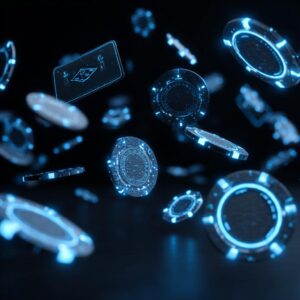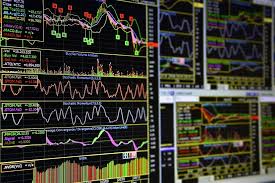The Green Side of Tech: How Innovation is Driving Sustainability
The global imperative for sustainability has never been more urgent. Climate change, resource depletion, and environmental degradation pose significant challenges. However, amidst these concerns, technology emerges as a powerful ally. Far from being just a contributor to environmental issues, innovation is actively driving solutions. The green side of tech showcases how cutting-edge advancements are revolutionizing our approach to energy, resource management, and environmental protection. This article explores the transformative role of technology in fostering a more sustainable future.
The Imperative for Green Innovation
Our planet faces unprecedented environmental pressures. Traditional industrial practices and energy consumption models have led to substantial carbon emissions, pollution, and waste. The sheer scale of these challenges demands innovative solutions. This is where the green side of tech steps in. It offers tools and methodologies to monitor, mitigate, and even reverse environmental damage. Technology provides the means to optimize resource use, transition to cleaner energy, and build more resilient systems.
Revolutionizing Energy: Renewable Technologies and Smart Grids
The energy sector is at the forefront of the green technology revolution. Innovations in renewable energy generation and distribution are crucial for decarbonizing our planet.
- Advanced Solar Panels: New materials like perovskites and bifacial designs are making solar panels more efficient and affordable. Perovskite cells are lightweight and flexible, allowing integration into diverse surfaces. Bifacial panels capture sunlight from both sides, significantly increasing energy output.
- Wind Turbine Innovations: Taller turbines, larger blades, and floating offshore designs are maximizing wind energy capture. Floating turbines unlock access to stronger, more consistent winds in deeper waters.
- Green Hydrogen: Produced through water electrolysis powered by renewable energy, green hydrogen offers a zero-carbon fuel alternative for hard-to-electrify sectors like heavy industry and long-haul transportation.
- Advanced Energy Storage: Innovations in battery technology (e.g., solid-state batteries, improved lithium-ion) and flow batteries are enabling more efficient storage of intermittent renewable energy. This ensures a stable and reliable power supply, even when the sun isn’t shining or the wind isn’t blowing.
- Smart Grids: AI and digital twin technologies enhance grid stability. They predict energy demand and supply, optimizing distribution and reducing waste. This seamless integration of renewables into the energy network is vital.
These advancements accelerate the transition away from fossil fuels, providing cleaner, more sustainable power.
Optimizing Resources: AI, IoT, and Circular Economy
Beyond energy, technology plays a pivotal role in optimizing resource use, reducing waste, and promoting a circular economy. This highlights another facet of the green side of tech.
- AI for Environmental Monitoring: Artificial intelligence analyzes vast datasets from satellites, sensors, and drones. It detects pollution, tracks deforestation, and forecasts climate shifts with unprecedented accuracy. AI-powered systems monitor air and water quality in real-time, enabling rapid intervention. They also help track endangered species and predict natural disasters.
- IoT for Efficiency: Internet of Things (IoT) sensors collect real-time data on everything from energy consumption in buildings to water usage in agriculture. This data allows for precise management and optimization. Smart buildings, for example, use IoT to control lighting and HVAC based on occupancy, minimizing energy waste.
- Precision Agriculture: AI-driven analytics and IoT sensors enable farmers to optimize irrigation, fertilization, and pest control. This reduces water usage, minimizes chemical runoff, and improves crop yields sustainably.
- Waste Management and Circularity: Technologies facilitate advanced recycling, waste-to-energy conversion, and composting. Digital tools track materials through their lifecycle, promoting reuse and reducing landfill waste. Reusable packaging programs, often tracked with RFID or QR codes, exemplify this shift towards circularity.
These innovations help us do more with less, minimizing our ecological footprint.
Building Sustainable Infrastructure: Smart Cities and Green Construction
The development of smart cities and advancements in construction technology are also crucial components of the green side of tech.
- Smart Cities: These urban centers integrate technology and data to enhance sustainability and quality of life. They use IoT for optimized traffic management, waste collection, and energy distribution. Projects like Saudi Arabia’s “The Line” aim for entirely carbon-emission-free urban living powered by renewables.
- Green Construction: Innovations include sustainable building materials (e.g., low-carbon concrete, recycled steel), energy-efficient designs, and technologies for water harvesting and recycling within buildings. Digital twins allow for precise simulation and optimization of building performance throughout their lifecycle.
These efforts create urban environments that are both technologically advanced and ecologically responsible.
Conclusion: A Collaborative Path to a Sustainable Future
The green side of tech demonstrates that innovation is not just a driver of progress but a critical enabler of environmental sustainability. From groundbreaking advancements in renewable energy and intelligent resource management to the development of sustainable urban infrastructure, technology offers powerful solutions to our planet’s most pressing challenges. While the journey towards a fully sustainable world requires ongoing research, investment, and policy support, the synergistic relationship between technology and environmental preservation offers immense hope. Collaboration among governments, companies, and individuals will be key to harnessing this transformative power and building a greener, more resilient future for all.














Post Comment